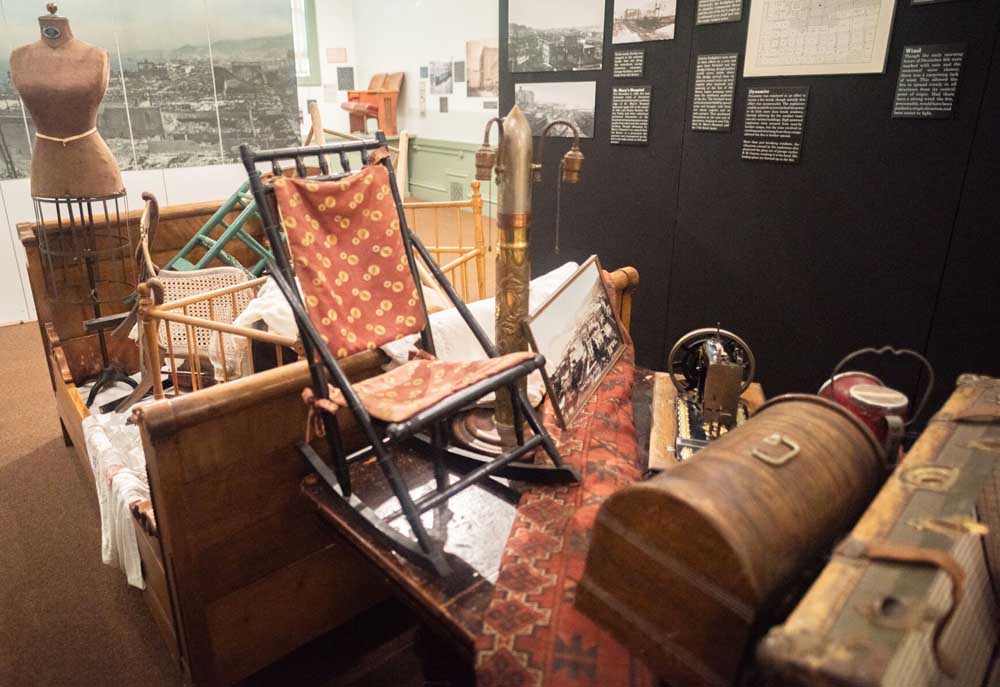Great Astoria Fire remembered a century later
Published 9:45 am Friday, October 7, 2022

- Household items pile up in the middle of the 1922 Great Astoria Fire exhibit at the Heritage Museum. During the fire, residents stacked furniture and other possessions in the streets in an attempt to protect them from the flames.
On Dec. 8, 1922, a fire tore through Astoria in the early morning hours, destroying a large portion of downtown and leaving several thousand people homeless.
In recognition of the fire’s 100th anniversary, the Heritage Museum created an exhibit titled, “‘This Has Been A Terrible Day,’ The Great Astoria Fire of 1922.”
According to Chelsea Vaughn, the curator at the Clatsop County Historical Society, planning the exhibit took more than a year. The exhibit, which opened in March, will remain until the end of the year.
During the planning process, Vaughn encountered challenges, one being the lack of objects that remained in the museum’s collection from the fire. The collection of items was so small, Vaughn said, it could fit into a banker’s box.
Those remaining pieces — such as a smoke-damaged beaded handbag, mugs and a piece from a column at the Young Building — are prominently displayed in the exhibit.
Vaughn also was able to use items from the Uppertown Firefighters Museum, such as a large, wheeled fire extinguisher and uniforms from the hose cart race team to build out the exhibit.
To help create the sense of disorder experienced by people in the fire, Vaughn also used items accurate to the time period for a centerpiece item she dubbed the “pile o’ stuff.”
The pile is enclosed along two long, black walls that include information about the reach of the fire’s destruction, descriptions of the buildings that survived the fire’s aftermath and a map of the burned area.
Personal accounts cover the opposite wall — detailing memories about the fire.
The inspiration for the piece was based upon first-person accounts from those who remembered or experienced the fire and Vaughn’s desire to recreate a common theme she saw throughout her research: how city residents tried to save precious belongings as the perimeter of Astoria’s streets became littered with items.
“Personal accounts … give you the sense of chaos,” she said.
“The streets everywhere for blocks outside the burned area are lined with furniture, mattresses, and personal effects,” said Chris Carlson, a former Astoria police officer, in one of the personal accounts displayed in the exhibit.
Carlson was also one of the first survivors of the fire to speak with a Portland-based newspaper, Vaughn said.
The fire originated at Commercial and 11th streets — and flames were seen in the basement of the Thiel Bros. Restaurant and Billiard Parlor. Fire spread easily due to the number of wood-framed buildings, wooden streets and plentiful airflow beneath the city. Even 100 years later, the cause of the fire remains undetermined.
“Law books were flying out of the banks’ upper windows,” remembered Walter Mattila, a resident who recounted his memories for the 25th anniversary of the fire. “On the street a few people laughed. The world could get along without law books. Looters ignored the volumes.”
For those who visit the exhibit, Vaughn hopes that people understand how all-consuming the fire was.
Streets constructed of wood collapsed, and business owners, including many who did not live downtown, ran into the fire to attempt to save their inventory. Several thousand people lost their homes in the aftermath.
Vaughn added that there is a clear before and after downtown. While some buildings were able to survive the flames, like the Young Building and the Spexarth Building, a large portion of downtown was rebuilt.
“Fire is a major turning point in Astoria history,” Vaughn said.






